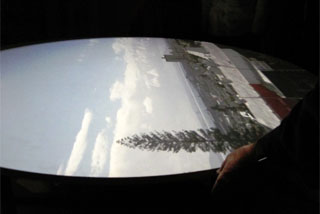|
Camera obscura offers stunning views of Cape Town
Martin Wilkinson, Optical Engineer from the Southern African Large Telescope (SALT) designed the camera obscura for the MTN Sciencentre in its original Canal Walk venue, and assisted with moving it to the Centre's new premises. At the new site, the camera offers breathtaking views of Table Mountain, Groote Schuur hospital, the surrounding streets and buildings as well as Table Bay with Paarden Island in the distance. The move of the camera obscura was made possible through a Programmatic Support Grant from the Department of Science and Technology, managed by SAASTA. The final touches to the roof structure and the room itself will be made in the following weeks and the camera obscura will open for Centre visitors soon. What is a camera obscura? The camera obscura is an optical instrument that was the forerunner of the modern photographic camera. It can range in size from a small tabletop device to a room-size chamber. The term is Latin for 'dark room', which describes the simplest form of the camera obscura - a darkened room into which light is admitted through a tiny opening in one of the walls, windows or roof. An inverted image from the outside world appears against the wall or on a table opposite the opening, but with colour and perspective preserved. The principle of the camera obscura has been known since ancient times, and the device was used for viewing astronomical phenomena such as solar eclipses from at least the thirteenth century. Primary source: www.answers.com/topic/camera-obscura |


